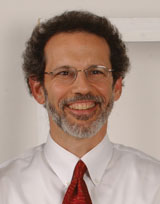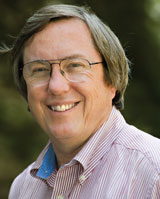In this issue
Home page
-
Features
-
Departments
- Letters
- News & Notes
- Parents
- Alumni
- Class Notes
- Giving
- Sports
- After Thoughts
- End Notes
Third floor Mrak Hall
University of California, Davis One Shields Avenue Davis, CA 95616(530) 752-1930
Volume 26 · Number 4 · Summer 2009
After Thoughts
UC Davis’ Sustainable Second Century
By Robert Segar and Sid England
Use your imagination. It’s 100 years ago — the year 1909. The Model T debuted to the American public just last year. The country is brimming with the promise of new technologies and America’s growing role on the world stage. Now imagine you have just set foot on the University Farm in Davisville for the first Picnic Day. You are dressed in your finery to see the state of California’s big investment in the future of agriculture. The shingles on the buildings around the Quad are fresh, the crops on the Quad are newly planted. The challenge of the day is to chart the path for California agriculture, to see what the land and its people are capable of producing.
Fast forward to 2009. The University Farm is now UC Davis. The courses in the practical arts of agriculture from a century ago have grown into the most productive agricultural research institution in the country. UC Davis has brought science to bear on agriculture in unprecedented fashion, transforming whole industries and the economies of whole nations. The College of Agricultural and Environmental Sciences has evolved to capture the full range of social, economic, environmental and biological factors that make up 21st century agriculture. The College of Engineering now has the largest undergraduate engineering program in the UC system. The School of Medicine and the UC Davis Health System are founding the newest professional school, the Betty Irene Moore School of Nursing, spurred by a $100 million gift from the Gordon and Betty Moore Foundation. The world’s great artists and UC Davis artists-in-training perform at the Mondavi Center. The College of Letters and Science spans social science, humanities, arts, and cultural studies and the physical sciences — from Native American Studies to astrophysics. The School of Veterinary Medicine ranks at the very top of its field. Professional degrees in law, education and management are sought after for the quality of the educational experience and the opportunity to interact one-on-one with an exceptional faculty. The breadth of UC Davis is unmatched. The dedication to tackling the challenges facing society stays constant, even as those challenges grow in unprecedented ways. And our 180,000 living alumni stretch across California and around the globe.
Rendezvous with 2109. How will UC Davis rise to the challenges of the future — climate change, global health and competition among people and nations for limited resources? UC Davis is positioned to “help shape the national agenda” as Chancellor-designate Linda Katehi charged in her first comments on campus in May. As we launch the second century in the story of UC Davis — the Sustainable Second Century — we will develop new systems for meeting today’s needs in ways that don’t compromise the ability of those who follow us to meet the needs of their time and place.
UC Davis is defining sustainability in the broadest possible terms, recognizing all of the promise and complexity that the word brings. Social scientists and humanists will shed new light on the workings of society, as technology and the global economy redefine personal, organizational and societal relationships. UC Davis artists will give expression to the full range of cultural diversity and human commonality. Agricultural scientists, engineers and designers will develop sustainable systems at the local and global scale, seeking healthier outcomes from the farm to the fork, from transportation to community development. Environmental policy experts, physical scientists and biologists will redefine the relationships among human beings and their environments. Life sciences faculty and students in medicine, veterinary medicine and biology will continue to cross boundaries to help us live longer, healthier lives in healthier environments.
To achieve a Sustainable Second Century, the boundaries between disciplines will have to disappear. As departing Chancellor Larry Vanderhoef has often said, no place has a better track record than UC Davis of building new bridges across boundaries.
Creating a future that is truly sustainable will take the talent and dedication of students, faculty, staff, friends and supporters. And UC Davis will walk the walk — transforming our campus into a model community that creates positive inputs for the environment in which we live. For starters, our West Village project on the UC Davis campus is poised to become the first community in the United States to run fully on local renewable energy with zero net energy use over the course of a year.
The complexity of building a sustainable future may seem daunting today, but look back at the jump UC Davis made from 1909 to 2009. Now, think ahead 100 years. Use your imagination.


Robert Segar, left, is assistant vice chancellor for campus planning and director of the UC Davis Centennial.
Sid England, Ph.D. ’95, right, is assistant vice chancellor for environmental stewardship and sustainability.
